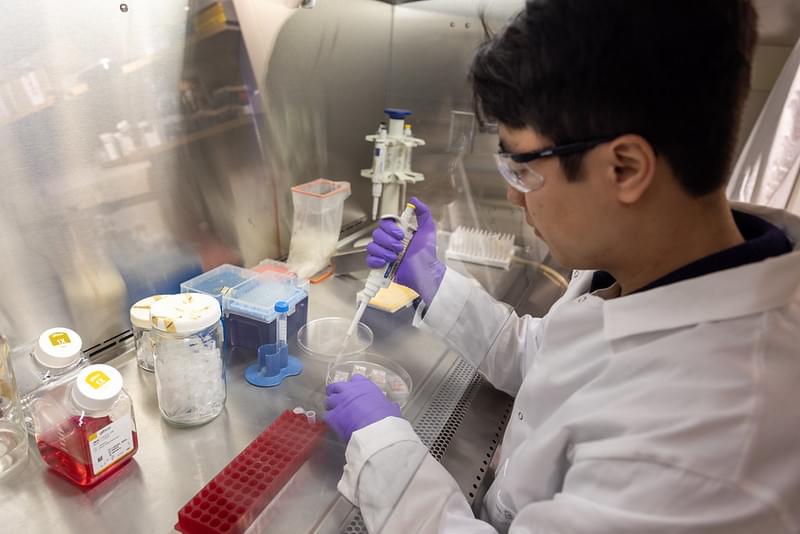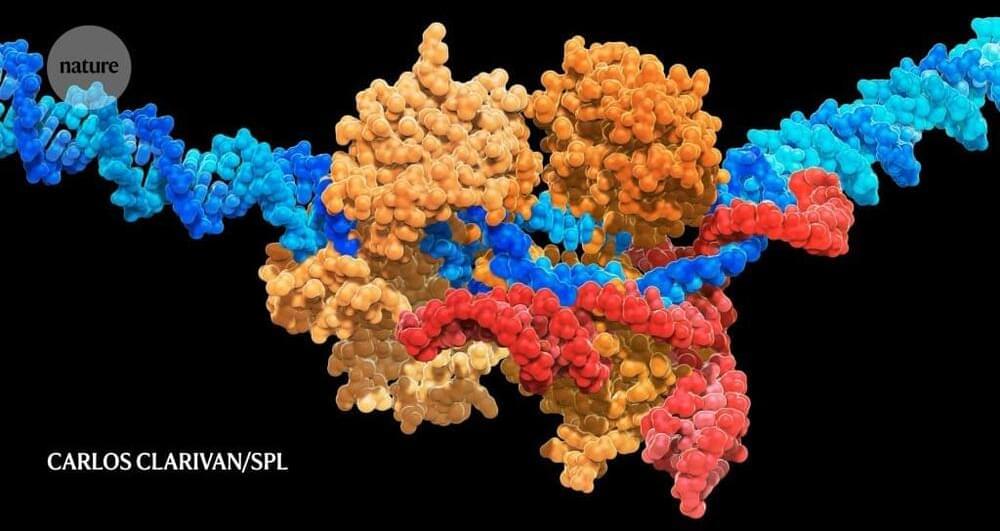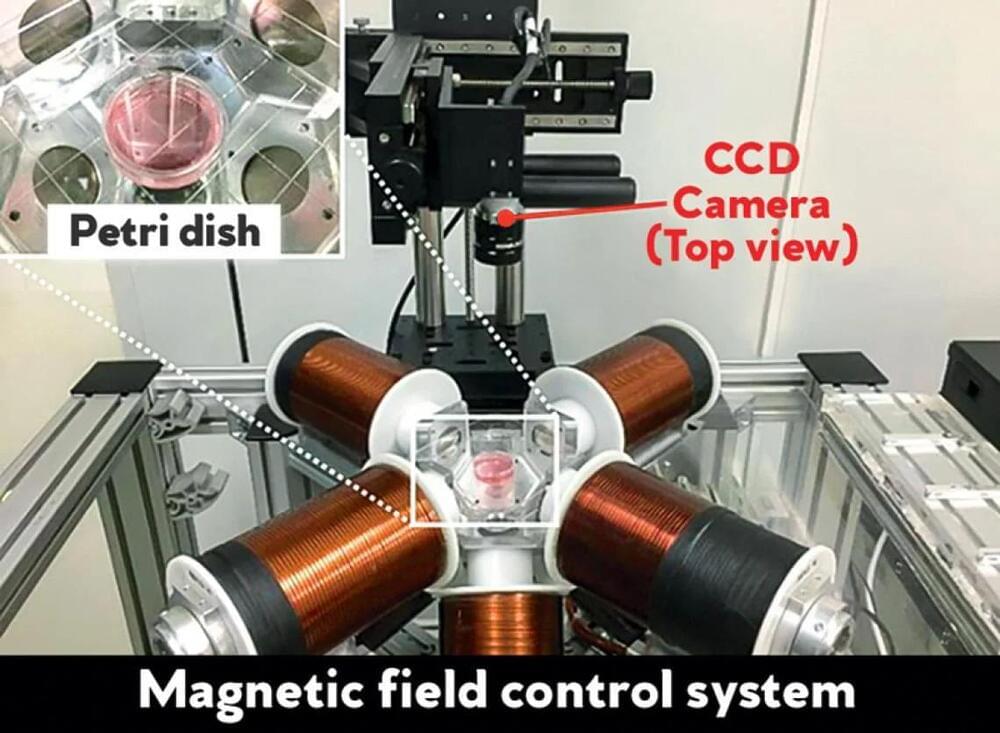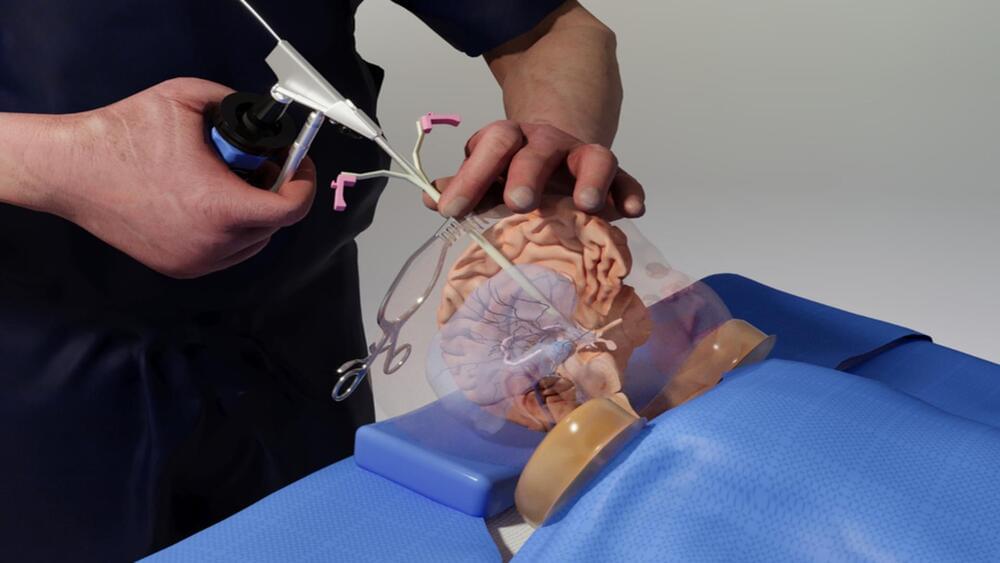Discount Links: Epigenetic, Telomere Testing: https://trudiagnostic.com/?irclickid=U-s3Ii2r7xyIU-LSYLyQdQ6…irgwc=1Use Code: CONQUERAGINGNAD+…
Category: biotech/medical – Page 720


In a First, Organoid Model Resembles All Three Sections of Embryonic Brain and Spinal Cord
The first organized stem cell culture model that resembles all three sections of the embryonic brain and spinal cord, and produces a full model of the early stages of the human central nervous system, has been developed by a team of engineers and biologists at the University of Michigan(U-M), the Weizmann Institute of Science, and the University of Pennsylvania (UPenn).
“Models like this will open doors for fundamental research to understand early development of the human central nervous system and how it could go wrong in different disorders,” said Jianping Fu, PhD, professor of mechanical engineering at University of Michigan.
This work is published in Nature in the paper, “A Patterned Human Neural Tube Model Using Microfluidic Gradients.”
Cancer Prevention and Control Panel
This CU Cancer Center Lunch and Learn from 2/21/2024 featured CU Cancer Center members Rajesh Agarwal, PhD, Stacy Fischer, MD, and Jamie L. Studts, PhD.

Stealthy stem cells to treat disease
Strategies differ, but there are some gene edits that all researchers agree must underpin any universal stem-cell-derived therapy. There is also widespread consensus that the optimal product should incorporate as few edits as possible, both to minimize the potential for unintended genetic consequences and to streamline manufacturing and regulatory approval.
Beyond that, the scientific community is divided. The complexities of the immune system have fuelled spirited debates over the exact genetic manipulations necessary to create a cell therapy that is both capable of bypassing immune defences and delivering meaningful health benefits.
“The immune system is pervasive and persistent,” says Charles Murry, a cardiovascular pathologist at the University of Washington in Seattle and chief executive of StemCardia in Seattle, one of a growing number of biotechnology companies developing gene-editing strategies to overcome immune barriers in regenerative cell treatments.

Brain repairs with nanorobots
Researchers have found that nerve cells, carried by magnetically powered nanorobots, can be guided towards specific sites in brain tissue to then establish structural and functional connections with the nerve cells of that tissue. While not yet realised in living organisms, the researchers believe their nanorobotic system could potentially be used in patients to treat nerve-related degenerative diseases and injuries.
They describe their findings in the journal Advanced Materials (“A Neurospheroid-Based Microrobot for Targeted Neural Connections in a Hippocampal Slice”).
In the study, a magnetic neurospheroid (Mag-Neurobot), which is made up of magnetic nanorobots carrying live nerve cells (neurons), was introduced into a slice of brain tissue and then magnetically guided to a precise location within that tissue using an external magnetic field.

Ableism Puts Neurodivergent Students at a Disadvantage
Physics has a diversity problem: those with identities outside of the majority “able-bodied, white, cis, and male” face significant barriers to entry. While efforts in the US to level the playing field are beginning to show success, studies continue to find that minority physicists will likely experience some form of bigotry, bias, or barrier during their career that will hamper their chances of success. These inequities and biases range from skewed course structures that favor specific learning styles (see Research News: Restructuring Classes Can Level the Playing Field) to systemic prejudices that hinder some groups from gaining grants (see News Feature: Systemic Racism Reflected in Grant Allocations, Researchers Argue) to unconscious biases that lead to the significant undercitation of minority physicists compared to their white, male counterparts (see News Feature: The Uneven Spread of Citations). All these factors can have serious career consequences, with negative experiences being a key factor driving people to leave the field.
One lesser-studied aspect of identity and how it impacts a person’s experience in physics is neurodivergence—a nonmedical umbrella term used to describe people whose brains process information in way that is different to what is considered normal. Now Geraldine Cochran of Ohio State University and Liam McDermott and Nazeer Mosley, both of Rutgers University, New Jersey, have developed a framework for interpreting the experiences of this group of people [1]. An initial analysis of interviews with three neurodivergent physicists shows that, while this group reports little outright discrimination or violence, structural ableism negatively impacted their time as students. “There are more neurodivergent people entering college than ever before,” McDermott says. “But their needs regularly get overlooked.”
A person who identifies as neurodivergent may have a neurological disorder, such as autism or Tourette’s syndrome; they may have a learning disability, such as dyslexia (which affects language processing) or dyscalculia (which affects number processing); or they could have a mental illness, such as depression or anxiety. For their study, Cochran, McDermott, and Mosley interviewed three physicists who identified as being neurodivergent and who pursued nonacademic careers after completing their undergraduate degrees. All three identified as having attention-deficit hyperactivity disorder (ADHD) and anxiety. Sky (the interviewees were all given pseudonyms) also has depression, Catalina has depression and dyslexia, and Henry has epilepsy. The interviews covered the trio’s undergraduate experiences. Cochran, McDermott, and Mosley then analyzed the trio’s answers using their newly developed “Critical Disability Physics Identity” framework.


Brain stimulation poised to move from last resort to frontline treatment
Get alerts for new articles, or get an alert when an article is cited.
Even so, proponents say that TMS and other noninvasive brain-stimulation methods—which include updated forms of electroconvulsive therapy (ECT) and transcranial direct-current stimulation—have yet to achieve their full potential, both as research tools and as clinical treatments for a range of neurological conditions. To get there, researchers want to fully understand the biological mechanisms behind these techniques, along with finding more rigorous ways to test them in the lab, all with a view toward making treatments more tailored and reliably successful. With its demonstrated benefits and lack of serious side effects, Colleen Loo, a neurostimulation pioneer at the University of New South Wales, says, “there’s no reason TMS can’t be used as a frontline treatment” for major depression.
